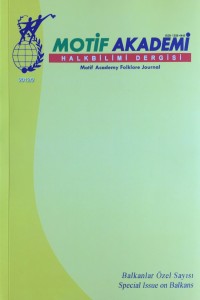Abstract
The fabric weaving can be examined in terms of techniques, equipment, colors, patterns and compositions. The most prominent feature of the textile art is figure feature. Figures can be grouped as a vegetative, geometric, figurative, transitive and symbolic. The most prominent figures on textiles manufactured in 16-18th centuries are vegetative and geometric figures. The aim of this study is the investigation of vegetative figures on textiles manufactured in Istanbul during the 16-18th centuries. A study was done by using the scanning method and 51 samples investigated. The most used figures on textiles manufactured in Istanbul during the 16-18th centuries are vegetative figures. Vegetative figures were formed compositions with or without other figures. The most important vegetative figures are Rumi, palmet, hatayi, lotus, tulip, clove, hyacinth, rose, pomegranate, apple, sytle of saz, Turkish Rokoko, sycamore leaf, dagger-leaf, cone, tree, the whell of fortune. These figures were used single or together with the others. In this study vegetative figures explained in detail with samples.
Keywords
Abstract
Kumaş dokumacılığını teknik, araç-gereç, renk, motif ve kompozisyon açısından incelemek mümkündür. Kumaş sanatında en belirgin özellik motif özelliğidir. Motifleri bitkisel, geometrik, figürlü, nesneli ve sembolik olarak gruplayabiliriz. 16-18. yüzyılda üretilen kumaşlarda en belirgin bezeme şekli bitkisel ve geometrik bezemelerdir. Bu çalışmada 16-18. yüzyıllarda İstanbul’da üretilen kumaşlarda görülen bitkisel bezemelerin incelenmesi amaçlanmıştır. Araştırma tarama yöntemi ile yapılmış ve 51 örnek incelenmiştir. 16-18. yüzyıllarda İstanbul’da dokunan kumaşlarda bitkisel bezemeler en çok kullanılan bezeme türü olmuştur. Bitkisel bezemeler yalnız veya diğer bezeme türleri ile kompozisyonlar oluşturmuştur. Rumi, palmet, hatayi, lotus, lale, karanfil, sümbül, gül, nar, elma, saz üslubu, Türk Rokokosu, çınar yaprağı, hançer yaprağı, kozalak, ağaç ve çark-ı felek en önemli bitkisel motifleridir. Bu motifler kumaşlarda bazen tek başlarına bazen de birkaç motif bir arada kullanılmıştır. Çalışmada bitkisel motiflerin kullanıldığı bezemeler örneklerle detaylı olarak açıklanmıştır.
Keywords
Details
| Other ID | JA93HN56BE |
|---|---|
| Journal Section | Articles |
| Authors | |
| Publication Date | December 1, 2012 |
| Submission Date | December 1, 2012 |
| Published in Issue | Year 2012 Volume: 5 Issue: 10 |

